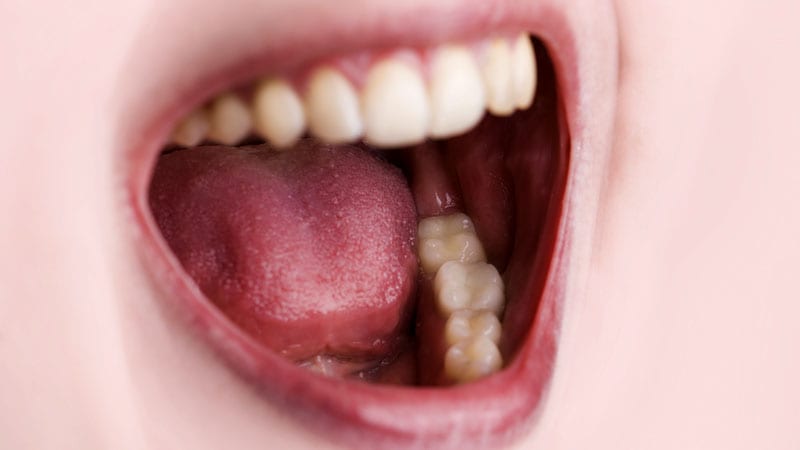
Editor’s note: Find the latest COVID-19 news and assistance in Medscape’s Coronavirus Resource Center
.
SARS-CoV-2’s infection sites are popular in the air passages and other parts of the body, but brand-new research study indicates that the virus also contaminates mouth cells.
The findings by Ni Huang, PhD, from the Wellcome Sanger Institute in Cambridge, UK, and Paola Perez, PhD, from the National Institutes of Health (NIH), and associates, published online in Nature Medication on Thursday, might assist describe the taste and smell loss, dry mouth, and blistering some clients experience, the authors say.
Previous studies have recommended that testing saliva is nearly as precise as deep nasal swabbing in detecting COVID-19, however bit was known about where the virus in the saliva originates from.
The researchers state the mouth ought to be contributed to the air passages in addition to the gastrointestinal system, blood vessels, and kidneys as infection sites for COVID-19
Saliva Is Infectious
.
” This is actually the very first direct proof that we have that SARS-CoV-2 can not just contaminate and reproduce in cells of the mouth but the fluid generated by the mouth is likewise infectious,” coauthor Blake Warner, DDS, PhD, Miles Per Hour, from the NIH’s National Institute of Dental and Craniofacial Research, told Medscape Medical News.
.
Warner said that the worldwide team of scientists discovered that the salivary glands were working essentially as a virus production factory.
” This is the prime environment for a SARS-CoV-2,” he said. “The salivary glands are not just good at making proteins, they are also good at producing fluids. Those fluids have the capability to move the virus to other individuals however also spread it to other parts of the body.”
The findings also assist verify the necessity for mask-wearing, proper individual protective equipment, and social distancing, Warner kept in mind.
He said it likewise may have implications for testing.
” We need to have folks who are tested routinely, prospectively in the nasal cavity and in saliva up until they get infection, particularly if they are a high-risk friend,” he stated. “Only then will we comprehend whether this early infection is happening first in the mouth or initially in the nose and after that follow them forward.
” Part of our data recommend that you might miss out on some folks if you’re only checking one website,” he added.
“ Bunny Hole” Tests Resulted In Discovery
.
Warner explained the “bunny hole” experiments that caused the discovery. They used saliva from screening facilities and donated tissue from autopsies of COVID-19 patients to show that the infection was present and might reproduce in the salivary glands.
Then they used tissue from acutely contaminated live donors and had the ability to validate that the salivary glands and mucosae might support both infection and replication.
Researchers then evaluated the saliva from a little group of people with asymptomatic COVID-19 to see if it might infect other healthy cells in a laboratory meal and discovered that it could.
Lastly, to explore the link between oral symptoms and infection in saliva, the scientists gathered saliva from a different group of 35 NIH volunteers who had moderate or asymptomatic COVID-19
Of the 27 individuals who had signs, those with infection in their saliva were more likely to report loss of taste and odor, suggesting that oral infection might discuss oral signs of COVID-19
Understanding of the mouth’s participation in COVID-19 infection can assist result in answers on decreasing transmission within and beyond the body, the group concludes.
William Schaffner, MD, a contagious disease professional at Vanderbilt University School of Medication in Nashville, Tennessee, told Medscape Medical News that he found the series of experiments “remarkable.”
The paper makes it clear that “an unappreciated area of the body may play a role in COVID infections,” he said, and it likewise assists respond to the perplexing concern of why many COVID-19 clients lose their taste.
” I believe for the average individual I do not think it means all that much except you do not want to kiss someone who’s got COVID,” he said.
However Schaffner states he’s intrigued by the paper’s implications concerning how the virus is transferred– and much more concerned about young crowds gathering to southern coasts.
” Now we have all these people on spring break,” he stated. “They’re not simply staying on the beaches, they’re not just going to the bars, some will have romantic relationships and this might be yet another way this virus might go from a single person to another very effectively.”
Marcia Frellick is a freelance reporter based in Chicago.
For more news, follow Medscape on Facebook, Twitter, Instagram, and YouTube.
No comments:
Post a Comment